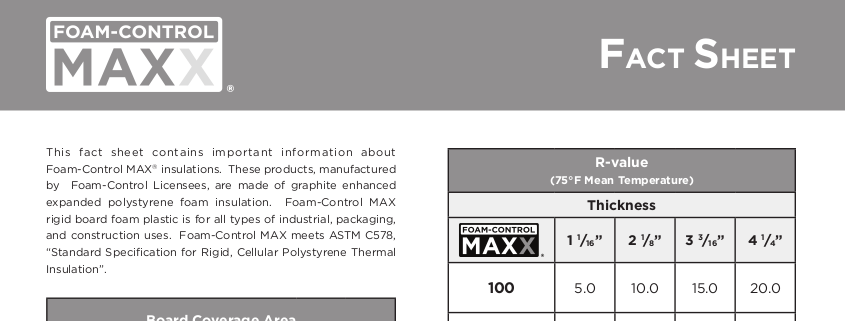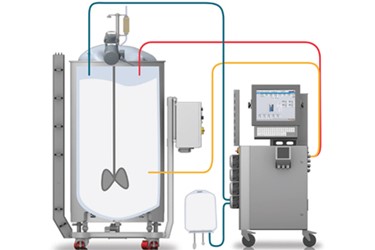The Function of Foam Control in Enhancing Product Quality and Performance
Foam control is an often-overlooked yet crucial part in the pursuit of item quality and operational effectiveness throughout varied industries. This conversation will certainly explore the complex influence of foam on both item honesty and production procedures, elevating necessary inquiries regarding the approaches that can be employed to maximize foam control.

Comprehending Foam Development
Foam formation is a complicated phenomenon that can significantly impact product quality and functional efficiency throughout numerous industries. Recognizing these variables is critical for taking care of foam successfully.
The fluid's viscosity and surface area stress play critical roles in foam security. Surfactants, as an example, can minimize surface tension, advertising bubble formation however also improving foam security, which can be bothersome in particular applications. In addition, mechanical anxiety, temperature level changes, and the visibility of pollutants can exacerbate foam generation, making it essential to monitor these aspects throughout production processes.
Industries such as food and drink, pharmaceuticals, and chemical manufacturing need to be especially watchful pertaining to foam control. By grasping the hidden mechanisms of foam development, organizations can carry out targeted strategies to mitigate its impacts, thereby preserving operational effectiveness and making certain consistent item performance.
Influence On Product Top Quality
The existence of foam can dramatically endanger item high quality throughout numerous industries. In making processes such as food and beverage, pharmaceuticals, and cosmetics, too much foam can result in inconsistent product solutions. For example, in food manufacturing, foam might catch air, influencing structure and flavor, which can inevitably change consumer perception and satisfaction.
Furthermore, foam can prevent the uniformity of paints and coverings, leading to issues like bubbles and irregular finishes. In pharmaceutical applications, foam can conflict with the precise dosing of fluid medications, potentially affecting restorative effectiveness and individual safety. These high quality problems not just decrease the end item's allure however can likewise lead to expensive recalls and damage to brand name credibility.
Furthermore, the presence of foam can make complex quality assurance steps, making it challenging to achieve precise dimensions and consistent outcomes. Reliable foam control not just alleviates these threats however likewise enhances overall product quality by making sure that formulations fulfill rigorous sector standards. By buying foam control techniques, firms can protect their items, enhance consumer complete satisfaction, and maintain an affordable side in the market.
Operational Obstacles From Foam
Efficient operations in different markets can be severely interfered with by the visibility of foam, which positions multiple challenges throughout production processes. Foam can prevent mixing and response times, hindering the effectiveness of chemical processes. In markets such as food and beverage, foam formation can cause inaccurate fill levels, resulting in product waste and incongruities in product packaging.

In atmospheres where health is vital, such as drugs and food processing, foam can complicate cleansing methods, producing concealed tanks for impurities. This not just elevates quality problems but likewise can result in compliance concerns with governing criteria.
Additionally, the emotional influence on operators can not be neglected; too much foam can produce a disorderly job environment, resulting in decreased spirits and performance. In recap, resolving the operational difficulties postured by foam is critical to keeping effectiveness and product high quality in various industries.
Approaches for Reliable Foam Control
Exactly how can markets efficiently minimize the difficulties positioned by foam? Efficient foam control strategies are crucial for improving item high quality and operational effectiveness. One key approach is using defoamers, which are chemical agents made to eliminate or reduce foam formation. Picking the proper defoamer calls for an extensive understanding of the particular procedure conditions and the materials included.
Along with chemical remedies, procedure optimization this plays a critical role in foam management. Industries can examine and change parameters such as blending temperature level, stress, and rate to lessen foam generation. Carrying out tools alterations, like setting up foam-breaking devices or adjusting storage tank style, can even more help in reducing foam levels.
Normal tracking and evaluation of foam habits within production procedures are likewise vital. Making use of innovative sensors and analytics can give real-time data, permitting prompt interventions and changes. Team training is similarly essential; ensuring that employees are experienced regarding foam characteristics and control strategies can lead to proactive foam monitoring.
Study and Industry Applications
While lots of markets deal with distinct difficulties connected to foam control, study reveal that customized methods can significantly helpful hints enhance both product quality and operational performance. In the pharmaceutical market, for circumstances, a leading supplier implemented a custom-made foam control approach that lowered foam formation during fermentation processes. This advancement not only boosted return by 15% but additionally minimized contamination threats, guaranteeing higher product honesty.
Similarly, in the food and drink sector, a major dairy manufacturer challenged too much foam throughout pasteurization - Foam Control. By introducing a specialized antifoam representative, they lowered processing time by 20%, which straight translated to increased throughput and reduced power usage. The application of foam control determines ensured regular product structure and taste, strengthening brand name commitment
In the chemical manufacturing field, an instance research study highlighted the successful application of foam control in wastewater treatment procedures. The implementation of a real-time monitoring system enabled operators to change antifoam dose dynamically, causing a 30% decrease in chemical usage and enhanced effluent top quality.
These case studies highlight the diverse applications of foam control across markets, stressing its vital duty in improving product quality and operational performance.
Verdict
In conclusion, effective foam control is essential to enhancing product high see quality and operational efficiency across various industries. Eventually, focusing on foam control adds to enhanced efficiency, guarding brand name reputation, and enhancing customer fulfillment, highlighting its significance in high quality assurance within producing processes.
Foam control is an often-overlooked yet essential element in the pursuit of item high quality and functional effectiveness across diverse sectors. Team training is just as crucial; guaranteeing that personnel are well-informed regarding foam dynamics and control strategies can lead to aggressive foam administration.
While several markets encounter special obstacles related to foam control, instance research studies expose that customized techniques can dramatically enhance both product top quality and functional effectiveness (Foam Control). In the pharmaceutical industry, for instance, a leading maker applied a customized foam control method that decreased foam development throughout fermentation procedures.In verdict, reliable foam control is essential to enhancing product quality and operational effectiveness across numerous sectors